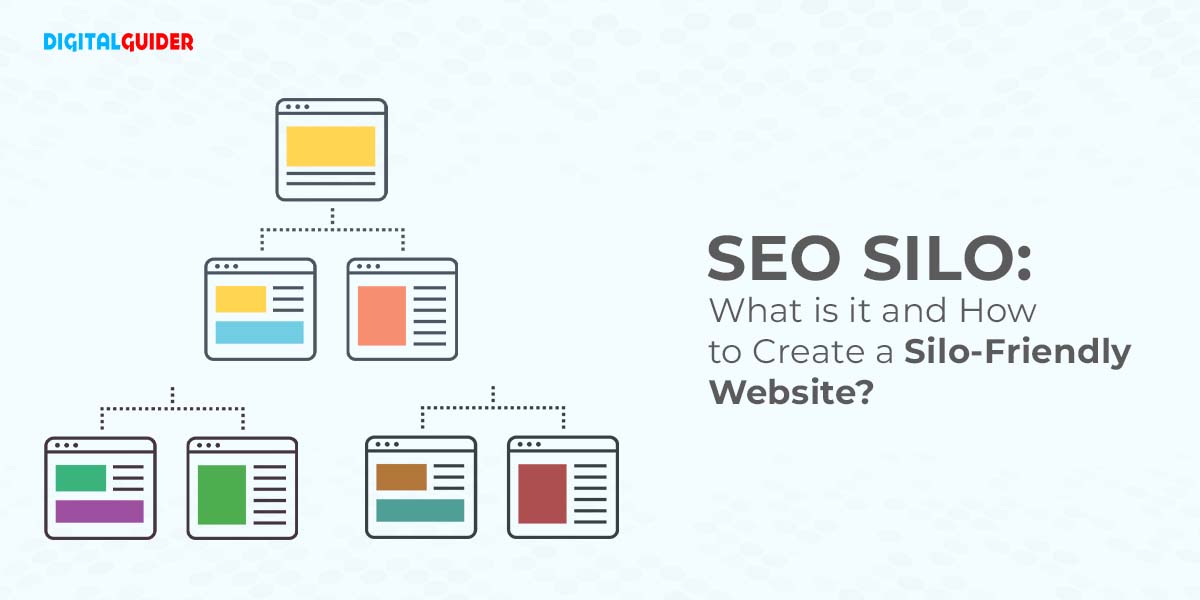Ever tried building a house without a plan?
It’s chaos. The same goes for your website—without structure, it’s a wild maze.
Creating a silo structure can be challenging for businesses that provide services to various industries, have numerous locations, offer different services and products, or have loads of blogs.
Incorrect implementation will prevent search engines from understanding your website. Search engines will find it tough to index your pages as a result, and SEO authority will not flow throughout your pages. The silo structure serves as a crucial element in guiding visitors to locate their desired information and signaling search engines that we are present and prepared for engagement!
Today, we are going to discuss the magic of SEO Silo Site Structure— your key to digital success.
What do you mean by Silo?
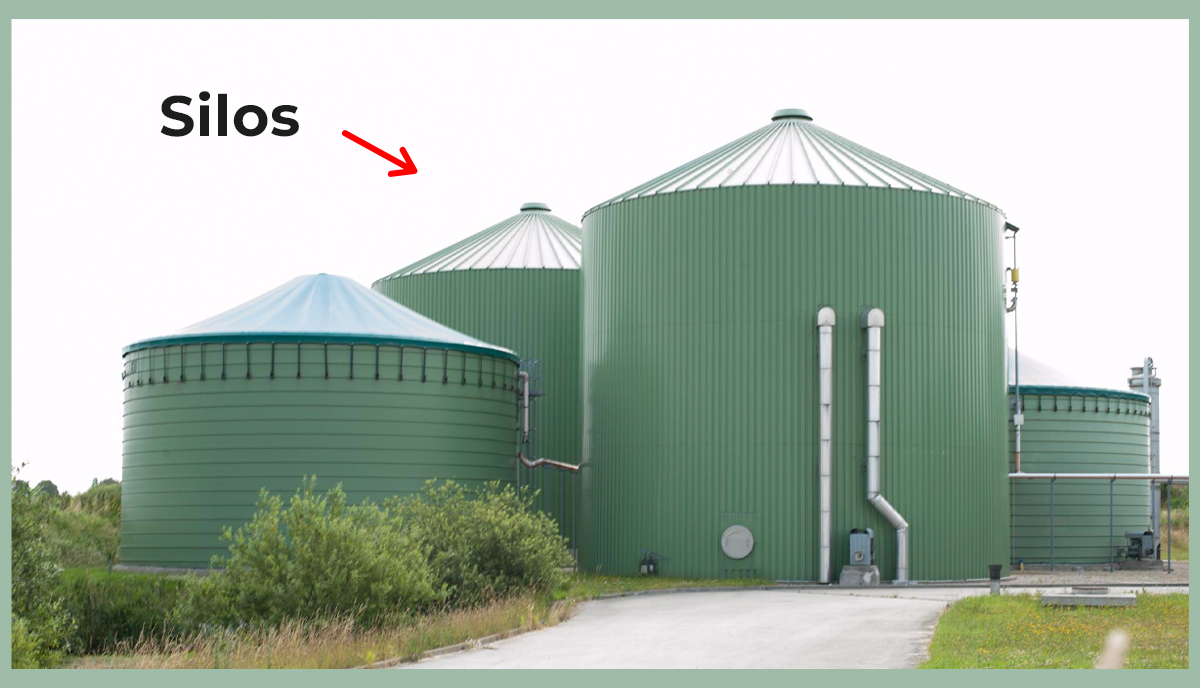
“Silo” denotes the act of keeping things apart or isolated from others, whether by grouping items into distinct units. In the business context, the term “silo” is used to describe this separation or isolation.
What is Silo Structure or Content Silo in SEO?
The expression “content silo” describes the SEO approach of organizing your website content based on a theme centered around keywords. Essentially, when implementing content silos, you categorize related content into various sections of your website.
The concept of “silo structure” involves arranging your content and backlinks in a way that makes it easy for Google to navigate your website. This starts with organizing your site in a hierarchical structure, where parent pages provide a general introduction to a topic. Under these main topic pages, you have supporting pages like blog posts and guides that cover specific aspects of the topic introduced on the parent page.
This is what it looks like:-

A silo structure is a planned website architecture that uses internal linking to connect specific pages. This ensures that link juice flows throughout the entire site rather than getting stuck on the original page. By internally linking pages, a silo is created, establishing a navigation path that can transfer link juice and topical relevance to other content on your site, such as blog posts or landing pages.
“Link juice” is the term used for the authority that passes when a page in this hierarchy gets a link from another site. It’s a crucial SEO idea connected to links, highlighting why siloing is crucial for your website.
Types of SEO Silo Structure
— Soft Silo
Creating a silo exclusively through internal links between each page is referred to as a “soft” silo. This means that the website structure is formed through connections within the website rather than relying on external factors.
— Hard Silo
Hard silos are also known as physical silos. These are silos integrated into the structural elements of your website, including your URL structures & directory structure. In contrast to soft silos established through internal linking, hard silos are more directly embedded into the website’s framework.
— Virtual Silo
By organizing similar pages, keeping unrelated ones apart, and enhancing dedicated landing pages, virtual siloing utilizes the internal link setup. Creating links between pages on similar themes forms a virtual silo, while physical siloing demands that related pages exist in the same directory. Establishing top-level parent pages and supportive child pages for each SEO silo helps concentrate topic relevance within a section of your website by linking closely related subjects.
What is the major challenge with Content Silos?
If your pages don’t connect to related content via internal linking, visitors might leave and find what they need on other sites. This can lead to missed chances for gaining leads or conversions.
For instance, if visitors come for content marketing but need technical SEO help, they might go elsewhere if the keyword page doesn’t link to relevant competitor research. Some experts say content siloing is planned, and search engines prefer natural linking. Silos also risk orphan pages, which are hard to find and may get fewer visitors in search results.
Difference between Silo Content & Topic Clusters
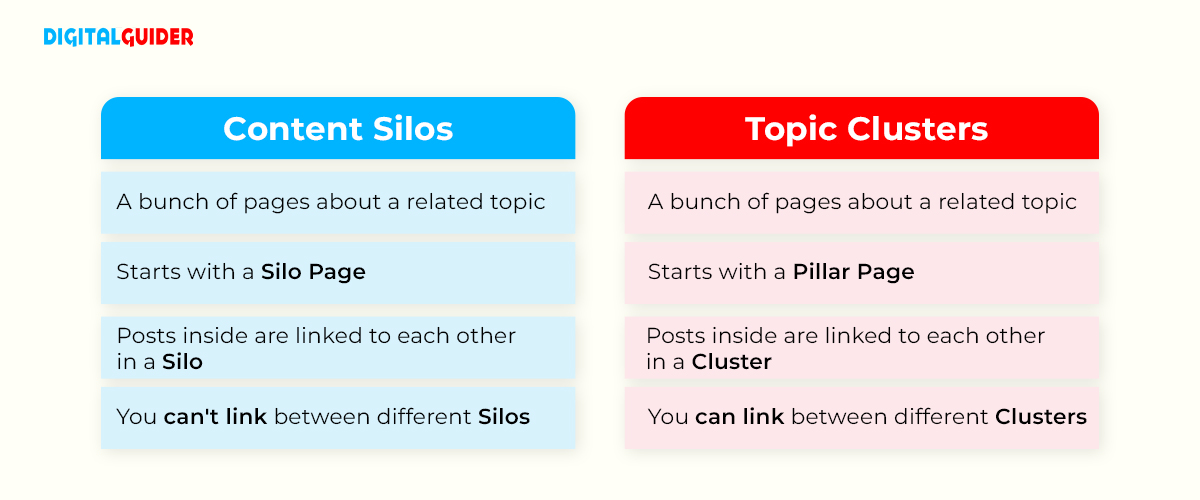
Topic clusters offer an alternative to content silos. They consist of related content like blogs and landing pages focused on a shared topic. Each cluster has a main pillar page acting as the central hub, offering a comprehensive overview and linking to related pages. Silos and topic clusters both categorize content and help establish authority on specific topics. While these terms are often used interchangeably due to their similarities, there’s a crucial distinction: you can link between topic clusters but not within silo content.
What are the main components of a silo structure in SEO?
Several core components constitute a successful SEO silo structure. These include:
Organized Content Themes: Content is strategically sorted into specific themes or topics, forming individual silos.
- Connecting Pages: Internal links create a network connecting pages within the same silo, strengthening thematic relevance and aiding navigation.
- Clear Web Address Structure: URLs can mirror the silo organization, improving understanding for both users and search engines.
- Central Silo Pages: These serve as central hubs for each silo, often optimized for primary keywords and acting as entry points to other category pages.
- Keyword Focus: Pages in each silo are optimized for specific, relevant keywords, increasing the likelihood of ranking higher in search results for those terms.
Create a Silo Framework in Four Simple Steps
– Decide Website Theme
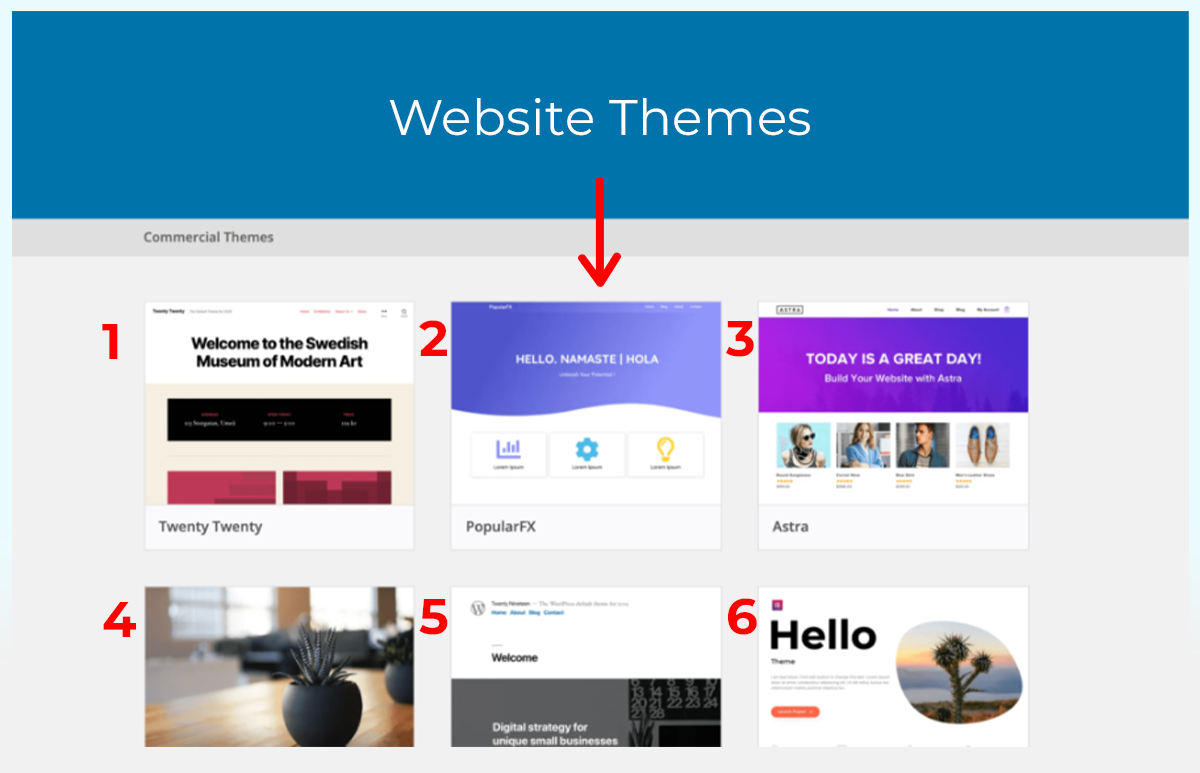
To do well online, a website must focus on clear topics that are easy to understand. Search engines prefer websites that keep things simple. If a website discusses many things, it’s essential to consider what’s included. Including things unrelated to the main topics might hurt how the website shows up in searches.
We can look at past visitor data using tools like Google Search Console to understand how a website is doing. This helps us see what topics are recognized by search engines. If there are areas related to the main topics but lacking content, we can create groups called “silos” to organize them.
Silos make it easier for search engines and people to understand the website. Think of a website like a big file cabinet. Silos are like drawers, holding specific information.
Some pages, like “About Us” or “Contact,” don’t fit in the drawers neatly, and that’s okay. If many pages are left, we can find common topics among them, giving more chances to organize content effectively.
– Website design with Physical Silos
Creating a well-organized website involves grouping similar content into structured directory silos. At least five pages are needed to establish a clear theme, each reinforcing the subject through its name. Visitors and search engines can grasp a site’s purpose with a defined directory structure, as shown below. Websites use the term “directories” to denote what are commonly known as folders.
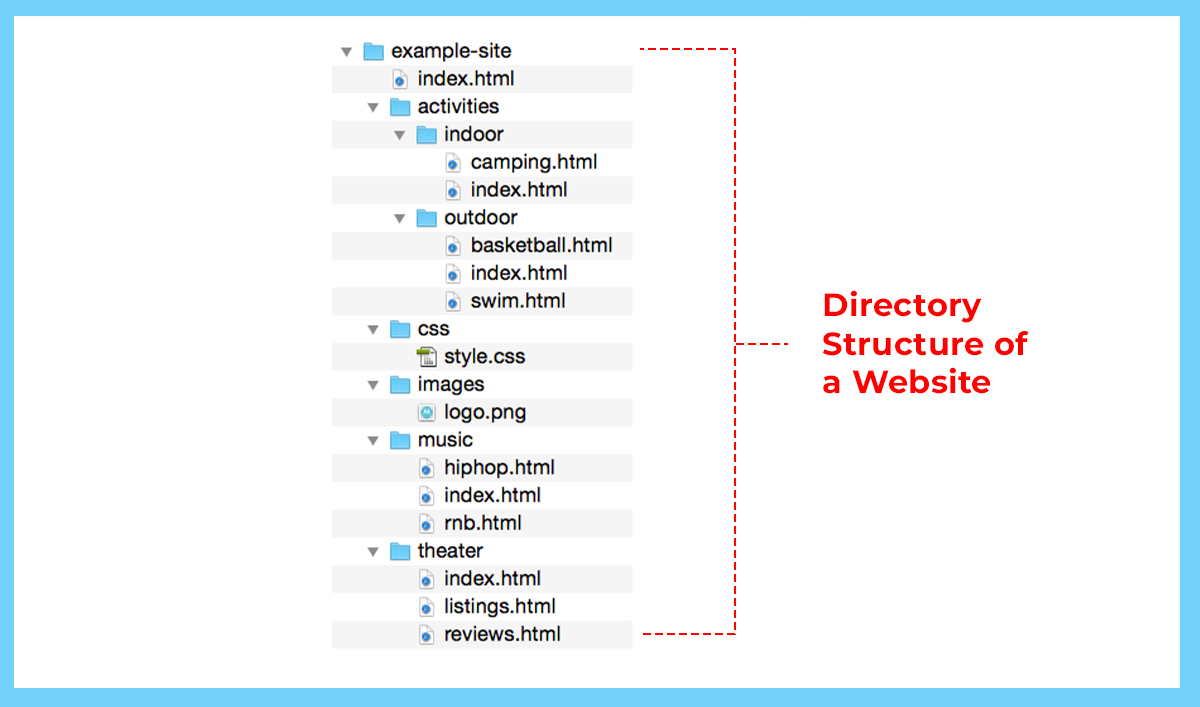
Everything must be neatly placed under appropriate headings for effective organization. Each category gets its heading, helping define the pages’ content. While many websites need to separate broad topics into different categories, staying within a manageable depth is crucial, as extremely detailed pages may lack relevance.
Multiple silos provide space for keywords, improving chances of ranking for specific terms. However, balance is vital; focusing on both general and specific terms within your silos ensures a well-rounded approach.
– Website Design with Virtual Silos
A website is like a big collection of pages on the internet, and search engines try to organize them into groups. Virtual silos help with this by linking related pages. These silos have a main page (landing page) and supporting pages, all linked together.
This linking helps search engines understand the topic of each silo. It’s crucial to link carefully, avoiding links between different silos, as it can confuse the themes. If you must link different-themed pages, use the “rel=nofollow” attribute to tell search engines not to pass certain information, as shown below:
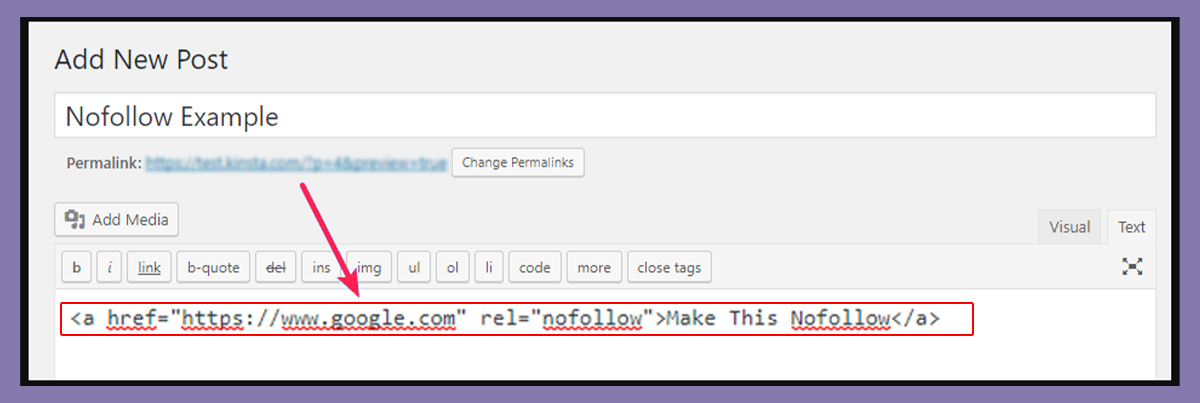
Linking within and between silos is important for a well-organized website. The words used in the links (anchor text) also play a big role in telling search engines what your site is about. Creating good links brings the right visitors to your site and improves your site’s visibility.
– Craft Content with Good Keywords
Quality content is crucial for online success, but not all content is the same. To impress search engines, your content needs specific qualities. Start by determining how much content is needed to compete at the top of search results. While having “enough” content is necessary, it’s not the only factor for ranking well.
Website ranking considers factors like overall site authority and the number of pages about a specific subject. Keyword density, or how often keywords appear, matters for individual keywords. There’s no ideal density, but it’s a helpful guide when planning content.
Watch this Hubspot video to get a grasp on Keyword research.
Testimonials are also vital; a lively community and unique, keyword-rich content keep visitors engaged. Encourage users to share their positive experiences, creating a dynamic website beyond simple testimonials.
What are the Benefits of SEO Silo?
– Enhance User Interaction
A well-organized website layout helps users find what they need easily. This makes it more likely for them to explore your site, recommend it, and have an overall positive experience. Visitors spending more time on your site boosts your search engine ranking.
This is because search engines see that your content helps answer people’s questions. So, having a clear structure, like a silo, not only makes your visitors happy but also improves your website’s ranking on search engines.
– Achieve a Higher Google Ranking
Why website structure matters because it boosts your Google rankings. Having a well-organized site also means your pages are more likely to rank higher for the keywords you aim for.
When your website is structured well and has links between pages, it helps search engines easily discover and include your pages in their index. If your pages aren’t connected well, search engines can find them, resulting in less organic traffic.
Pages without links are trickier for search engines to go through, index, and rank. Good website architecture provides a clear picture to search engines, helping them understand what your page is all about in the context of your website.
– Boost Authority Flow and Indexing
A good website structure brings more advantages. Page rank flows better when your site is well-organized. By having logical and relevant internal links, the PageRank from external links spreads to related pages, boosting their Google ranking. Creating sub-topics within a content silo tells search engines that your website is an authority on that topic.
This is crucial because your website’s content influences its keyword ranking. It’s also essential to think about how much-related content you have on your site. This doesn’t just benefit search engines; it also makes things easier for your human visitors.
Conclusion: Become a master at Siloing
Organizing your website is super crucial for SEO, and making silos is a smart way to arrange your content in a way that makes sense to both search engines and people.
If your site’s structure needs improvement, Digital Guider is here to assist. We’ve assisted many clients in building successful SEO plans and have lots of experience in creating clear structures for all kinds of websites. Connect with us today to talk to a strategist and grab a free quote, or call us at +1-307-209-3608.
